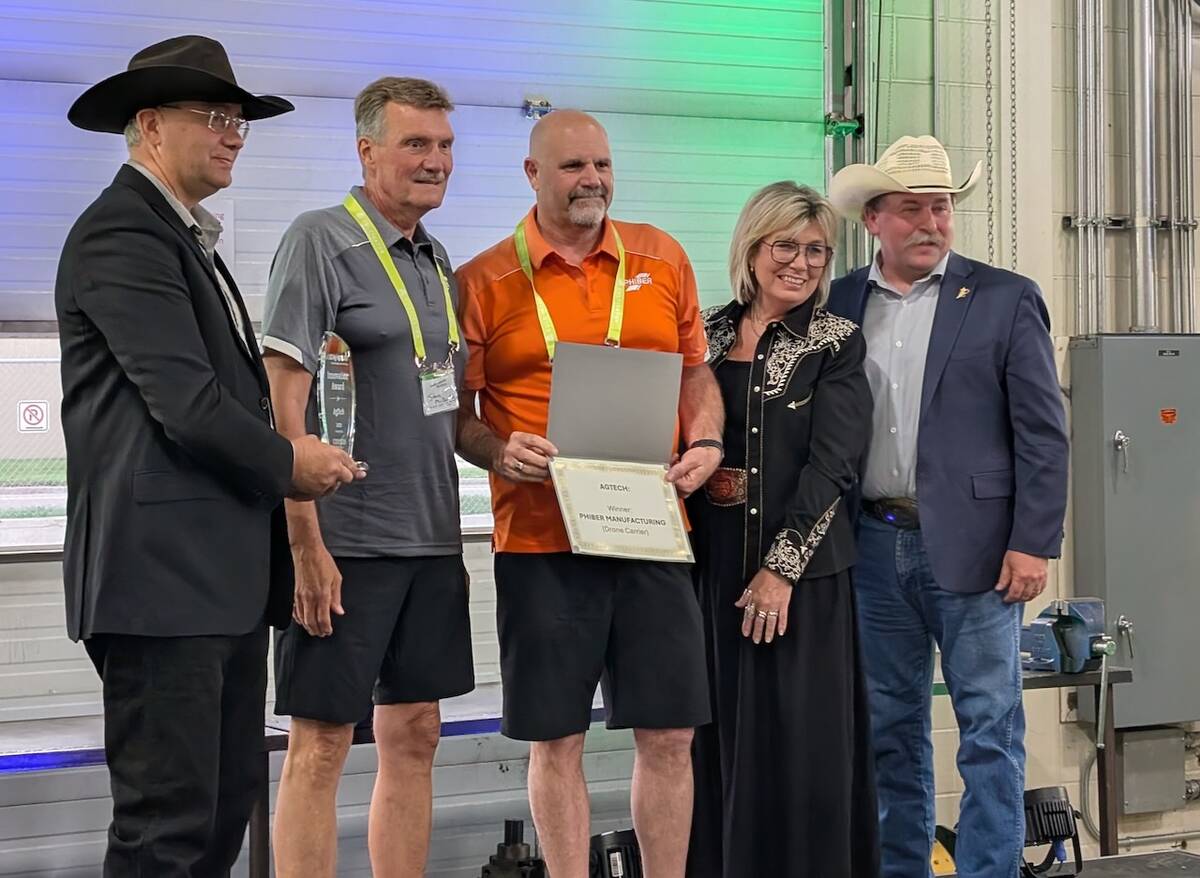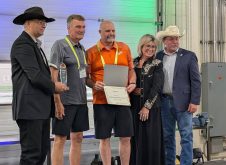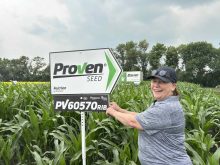PIKE LAKE, Sask. – Nature watching has taken on a whole new meaning for farmers southwest of Saskatoon.
At least one cougar has been prowling the area, enjoying the bountiful population of white-tailed deer.
On Jan. 21, a cougar pounced on a deer that had been eating hay beside the bales and corrals on a farm in this region about 30 kilometres south of Saskatoon.
“The cows are more uneasy than they’ve been for a long time,” said Terry Crilly, who discovered the bloody mess in the snow and the hay.
Read Also

Ag in Motion innovation awards showcase top 2025 ag technology
The 2025 Ag in Motion Innovation Awards celebrated winners across five categories: agronomics, agtech, business solutions, environmental sustainability and equipment.
Her red heeler dog, Sam, was the first member of the family to notice that a cougar had visited.
“She could tell half way to the barn that something was different. She was sniffing everything.”
There has always been a sparse cougar population in Saskatchewan, but for most rural residents the cats exist as spectres that leave tracks in the night.
This cougar has not killed cattle or threatened humans, but Saskatchewan’s environment department alerted the media about the Pike Lake deer kill in an attempt to avoid hysteria.
“We want people to know that cougars are in the area,” said conservation officer Alan Winarsky.
He said some people are worried about cougars since a woman was killed by one in Banff, Alta.
He said the chances of being attacked by a cougar are lower than being struck by lightning. There has never been a recorded case of a cougar attacking a human in Saskatchewan, he added.
Crilly said she isn’t going to live in fear, but she is taking sensible precautions.
“We’re keeping an eye on our young fellow walking down to the bus,” she said about her 12-year-old son.
Her cattle don’t calve until March, so she’s not worried about an immediate threat to her livestock. And since her cows don’t calve in the open, she thinks they should be relatively safe.
Winarsky said producers who are worried about cougars preying on livestock can add more lights to areas where cattle stay at night, and clear brush from the perimeters of corrals and pens.
Winarsky said cougars follow deer populations, which often move among cattle at Crilly’s farm, sharing hay.
Crilly said the area’s deer population has greatly expanded and is living off the hay farmers put out for their livestock. Often, when she looks over her herd, half the animals are deer.
“The deer are just part of the cow herd now,” she said.
Winarsky said the cougar that killed the deer in the hay was “acting naturally.”
Bob Smith, Crilly’s father-in-law, said he doesn’t think the cougar is any danger to people on the farm, but added the environment department should consider catching and moving the animal because of the possible threat to local farmers’ calves.
Winarsky said conservation officers don’t believe that is necessary, unless the cougar becomes a pest.
Crilly said her son isn’t scared of the predator.
“He thinks we should be out on a bale at night watching for this thing,” Crilly said.
“I’d like to see it too, but not up close.”

















